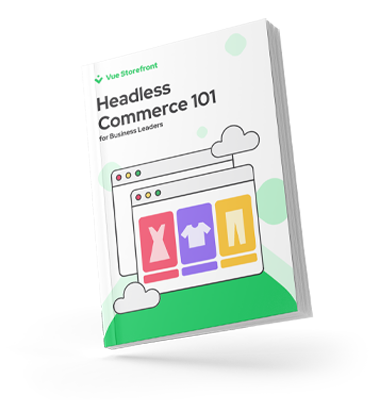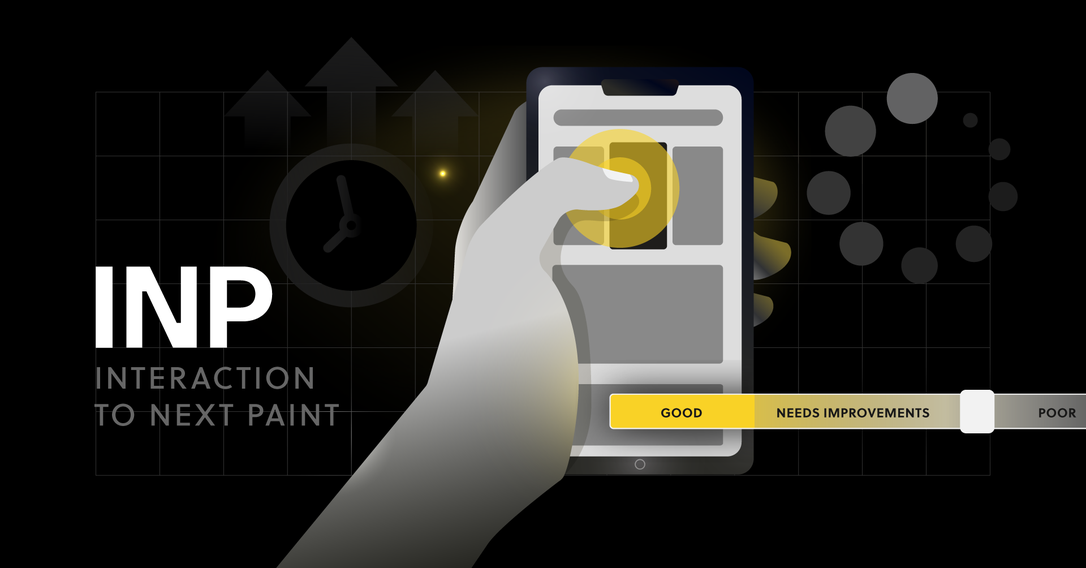9 min
August 8, 2025
What is Frontend in eCommerce: What You Should Know
You might have heard that the frontend in e-commerce is where the entire digital customer journey happens. But what exactly is the frontend? This article will answer all your questions related to the frontend. Read on to discover why it's crucial for e-commerce businesses to invest in a high-quality frontend to boost conversions and revenue.
Listen to the audio version of this article.
What is frontend?
The frontend, or more simply, the presentation layer, is the part of a website that the user or customer interacts with. The frontend consists of the website's HTML elements, styles, and scripts used for interaction. It also includes buttons, fonts, layout, text, images, menus, search bars, and even how the page loads and accessibility practices.
When customers visit eCommerce websites, they don't think about the backend (that's where the business logic resides). What they perceive as the website is what they see in front of them. Therefore, the frontend plays a crucial role in the customer experience.
Frontend for eCommerce
Now that you know the definition of frontend, let's delve into the world of the presentation layer. When it comes to building an eCommerce website, you have two options to choose from.
The first is to opt for a monolithic legacy solution, and the second is to choose a composable commerce stack, starting with the storefront. Let's find out the difference between them and what will be the best choice for your business.

Traditional Frontend in eCommerce: Monolithic Legacy Platforms
Since the dawn of eCommerce, traditional legacy platforms (monolithic solutions) were the only choice for building an online store. These platforms function as all-in-one systems where the frontend and backend are tightly intertwined in a coupled architecture.
There was a time when a coupled frontend and backend were incredibly beneficial. Traditional platforms have all the components needed to create an eCommerce site within a single codebase. With their help, brands could quickly deploy eCommerce sites and manage them effortlessly using templates. And just a decade ago, monolithic platforms were the only and most convenient option for eCommerce businesses.
 However, with the growth in the number of online stores and fierce competition, customers began to expect unique and seamless digital experiences. And that's when challenges associated with monolithic systems started to emerge. All-in-one monolithic platforms were designed to give full control over the system, but what they didn't foresee was that in modern eCommerce, control should go hand in hand with flexibility.
However, with the growth in the number of online stores and fierce competition, customers began to expect unique and seamless digital experiences. And that's when challenges associated with monolithic systems started to emerge. All-in-one monolithic platforms were designed to give full control over the system, but what they didn't foresee was that in modern eCommerce, control should go hand in hand with flexibility.
 As we know, the ability to evolve is crucial for success in any business. Monoliths restrict marketers from rapidly implementing frontend changes, causing them to fall behind user expectations and lose conversions.
As we know, the ability to evolve is crucial for success in any business. Monoliths restrict marketers from rapidly implementing frontend changes, causing them to fall behind user expectations and lose conversions.
Headless Commerce and a New Approach to Frontend in eCommerce
Headless commerce solutions are part of the composable commerce approach, where eCommerce companies are free to select their ideal technology stack and arrange it into a unique composition that meets their business requirements.
Headless commerce is becoming one of the most significant trends and is already transforming eCommerce. This approach is based on the idea of separating the presentation layer (frontend) from the application logic (backend), which provides even the most mature enterprises with the agility and flexibility of a startup.
Frontend in Headless Commerce Architecture
Because in headless commerce the frontend and backend exist independently, there is no longer interdependence between these two layers. This gives companies greater freedom to create and update the presentation layer quickly, without interfering with the backend (and without developer assistance).
Headless commerce, as a future-proof solution, is becoming the standard in the eCommerce industry as companies begin to realize that it's impossible to predict the future and prepare for what comes next. Separating the backend from the frontend and having the freedom to move things in and out as needed is the first step to becoming "future-ready."
Core Elements of the Frontend Layer
When working on creating your website's frontend, it's good to keep in mind three fundamental elements of the presentation layer. These elements are essential for building a successful eCommerce website with a top-tier customer experience.
 1. Website Performance
1. Website Performance
Another key element of the frontend is website performance. First and foremost, a well-performing frontend is fast, which positively impacts the customer experience.
The first five seconds of page load time have a crucial impact on the conversion rate. Furthermore, the conversion rate drops by 4.42% with each additional second of loading time. This means that performance is critical for optimizing conversions and revenue growth.
Moreover, excellent website speed and performance translate into better SEO results. Additionally, what's important for your eCommerce website's performance are Google Core Web Vitals (CWV). Since the 2021 update, Google uses page and image loading times as one of the fundamental ranking elements for websites.
 2. UX
2. UX
User Experience or UX is the part of the presentation layer that focuses on how people use or interact with a product. It takes the user's perspective and answers the question "How would a customer first approach this page?". UX encompasses the design part from icons down to the animations that occur when a user performs a click.
There are many UX components to consider to ensure an excellent user experience. For example, let's look at Peter Morville's UX Honeycomb.
 3. Design
3. Design
This diagram quite accurately lays the foundation for good UX. It shows how every aspect is important to meet user needs, considering the product's technical capabilities, while simultaneously driving business value. Remember that a pleasant user experience is what can turn users into customers.
What is a frontend without design? The third, but by no means least important, element of the frontend is design. Design is what users see first when they visit your eCommerce site, and first impressions are crucial. Nobody wants to shop on a site that looks outdated, with a messy layout or poor quality photos.
Furthermore, design plays an important role in building a company's brand. The design part of the frontend is responsible for making your e-commerce site unique so it can easily stand out from the competition.
eCommerce Frontend and Your Business Goals
Let's find out the value of the frontend from a business perspective.
The frontend is what visitors to your site see and interact with during the purchasing process. This is why a storefront-first approach is crucial for your business goals. But how can you ensure your frontend is doing its job correctly?
Prioritize Customer Experience
Frontend and customer experience go hand in hand. If your store's frontend has poor performance and isn't mobile-friendly, your customer experience metrics will remain low. That's why prioritizing customer experience should become one of your main goals for improving your eCommerce frontend. A high-quality, fast, and mobile-friendly storefront is crucial for delivering amazing customer experiences, increasing conversions, and revenue.
Ensure Fast Load Times
Today's users cannot tolerate slow websites. The frontend should load quickly and respond rapidly (within 1-2 seconds) to user actions on the page. For example, a load time of 1 to 5 seconds increases the probability of a bounce rate by 90%.
Implement Responsive Design
In the omnichannel era, customers use a huge variety of devices and operating systems on their buyer's journey. Your website's presentation layer must be mobile-friendly to ensure a smooth and easy purchasing process regardless of the device.
Take Care of UX
Customers choose more convenient websites and demand that your eCommerce presentation layer be simple and user-friendly. Furthermore, high-quality frontend solutions prioritize intuitive and seamless navigation to ensure the purchasing process is always frictionless. Remember that a cluttered graphical interface cannot offer a great user experience.
Frontend Technologies for eCommerce
Here's a quick overview of the most popular frontend technologies you can choose from.
Angular.js
AngularJS is a structural framework for building JavaScript-heavy single-page web applications. AngularJS is used to change HTML from static to dynamic and extend its syntax to more clearly render elements of your page.
React.js
ReactJS is a JavaScript library for building fast and interactive user interfaces for web and mobile applications; it helps ensure a consistent user experience. This library is open-source and based on reusable components.
Vue.js
Vue.js is a progressive JavaScript framework for building frontend UIs. With Vue.js, you can start simple and then gradually add the tools and features needed to build a complex web application. Vue.js allows for incremental adoption, which makes it easier for developers to integrate with other libraries.
How Can Your Frontend Benefit from Headless Commerce?
At the beginning of this article, you were introduced to two options for creating the frontend for your eCommerce. Now, the entire eCommerce world is shifting towards a headless frontend. Why?
Transitioning to composable commerce brings many benefits, such as driving website performance, customer satisfaction, and your revenue through:
Excellent website performance and a mobile-first architecture
Faster and more secure updates
Advanced personalization
Flexibility
Read more about the benefits of headless commerce.
To transition to headless commerce quickly, merchants can adopt a cost- and time-efficient approach, and instead of a full replatform, start by replacing only the frontend.
Frontend as a Service for eCommerce
Deciding on a headless technology is a step towards the future success of your online store, but you need the right approach to get there. This is where Frontend as a Service (FEaaS) comes into play.
Frontend-as-a-Service provides eCommerce businesses with a one-stop-shop solution for creating high-performing storefronts, from build to launch, all in one place, using a single tool.
FEaaS tools are decoupled from the commerce backend and focus exclusively on frontend experiences.
Vue Storefront Frontend as a Service
As a complete FEaaS solution, Vue Storefront offers pre-built, optimization-ready building blocks that let you customize your storefront instead of creating it from scratch.
Ready-to-use integrations with eCommerce platforms like commercetools, BigCommerce, and Elastic Path, along with an API-first approach, allow businesses to connect Vue Storefront with any third-party tool, such as a CMS, payment gateway, or analytics.
Combining these services into a single product helps eliminate disharmonious customer experiences and colossal performance issues for online stores.
In a standard headless approach, you'd have to manage a dozen microservices and middleware. To solve this problem, Vue Storefront handles all these elements in one place. Request a demo to learn how Vue Storefront can help you create a fast, mobile-first frontend to drive conversions and revenue.
Original author: YULIIA BUINOVA




